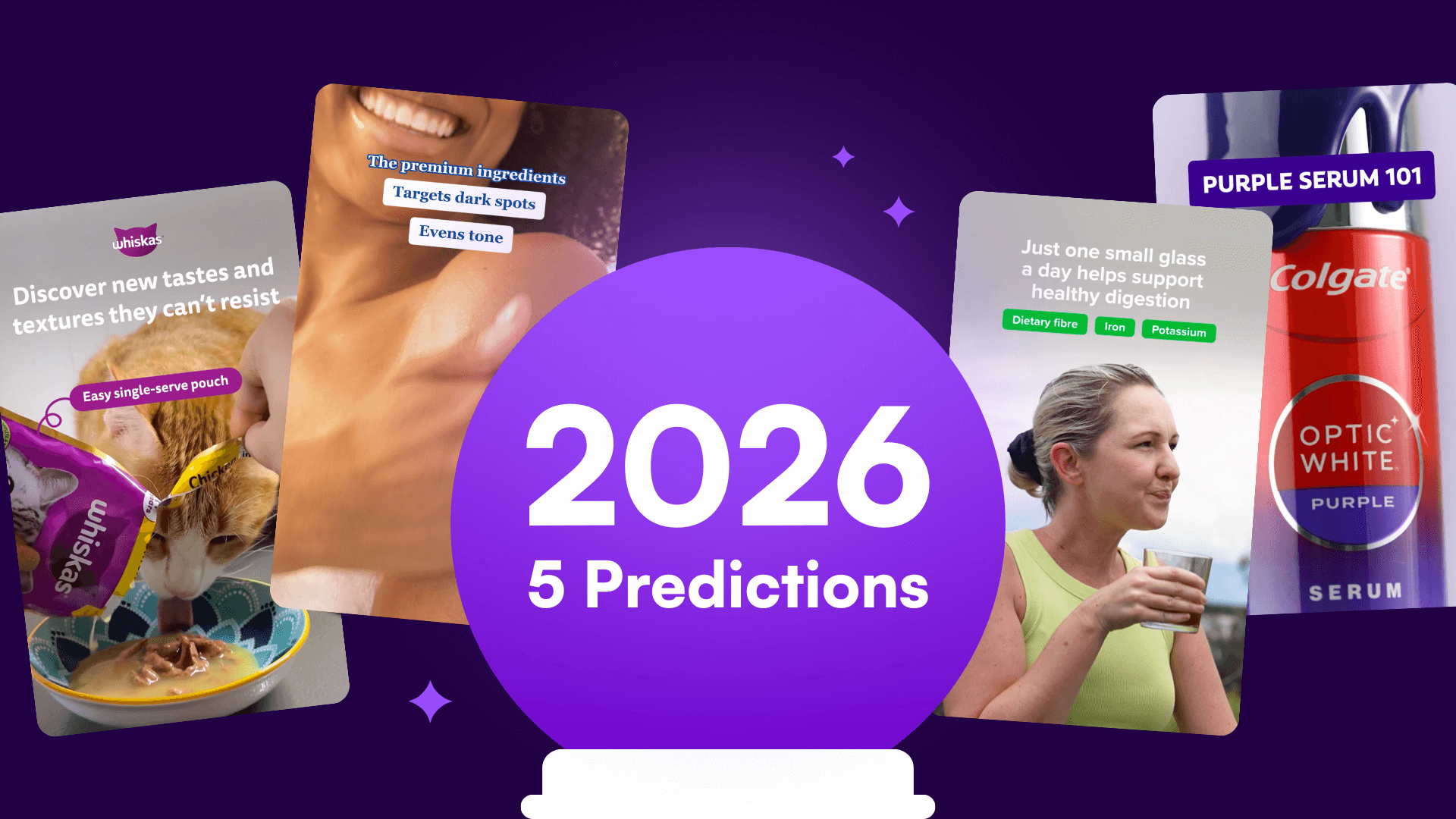Why more content doesn't mean worse content
%20(1).png)
There's this fear that haunts marketing teams when content demands explode: to create more, you have to accept worse.
Less polish. Less strategy. Less brand consistency. The thinking goes that when you need 50 pieces of content instead of 5, quality becomes the casualty.
But here's what's actually happening in the market: brands that understand digital content are producing more assets and achieving better results than ever before. They've just stopped trying to scale digital content using traditional methods.
The difference isn't budget or team size. It's that they've built partnerships and processes designed specifically for how digital content actually works—not how traditional advertising used to work.
Why traditional approaches break at digital scale
Most brands are still approaching content scaling like it's 1995. They brief creative like a TV commercial, expect perfection on the first try, and measure success the same way across every platform.
This worked fine when you needed one hero video for a campaign. But digital demands something completely different.
You need content that fits how people actually consume media on TikTok versus LinkedIn. You need the ability to test what resonates, not guess. And you need to adapt quickly when audience tastes shift—which they do, constantly.
Traditional creative processes can't handle this. They're built for perfection, not iteration. For big reveals, not ongoing conversations. For broad reach, not targeted relevance.
When you try to scale digital content using traditional methods, you get exactly what most brands fear: lots of expensive assets that don't perform because they weren't designed for how digital actually works.
What digital-first scaling actually looks like
The brands succeeding at content scale have made a fundamental shift: they've stopped trying to create "perfect" content and started creating effective content.
Here's how it works in practice. Instead of briefing one polished campaign video, they develop multiple strategic variations from day one:
- Different hooks that test what stops the scroll
- Various messaging angles that explore benefit versus feature focus
- Creator-led versions that feel native to platform culture
- Format variations optimized for different attention spans
Each piece serves a specific testing purpose while maintaining brand integrity. The goal isn't to create award-winning creative—it's to create content that teaches them what actually works with their audience.
This is the mindset shift that changes everything: from trying to predict what will work to systematically discovering what does work.
The partnership model that makes this possible
Scaling content this way requires capabilities that most internal teams don't have—and shouldn't be expected to build.
Digital-native creative expertise Traditional agencies think in campaigns and big ideas. Digital scaling requires people who understand platform algorithms, audience behaviors, and content formats that change constantly.
Built-in testing and learning infrastructure Instead of creating content and hoping it works, you need partners who design variations specifically to generate insights. This isn't just A/B testing headlines—it's systematic experimentation with creative approaches.
Real-time optimization capabilities Digital content needs to adapt while campaigns are running, not months later. This requires partners who can monitor performance, identify patterns, and refresh creative based on what the data reveals.
Quality frameworks that enable speed The best digital partnerships establish clear brand guidelines upfront, then give creators flexibility to adapt within those parameters. Quality becomes about consistency and effectiveness, not just polish.
.png)
How to define quality when audience tastes evolve
Here's the thing about digital content: what your audience considers "quality" changes faster than traditional brand guidelines can keep up with.
Last year's polished brand video might feel stale on today's TikTok. What worked for Millennials might completely miss Gen Z. Platform trends shift monthly, sometimes weekly.
This is why the smartest brands have stopped defining quality as "looks expensive" and started defining it as "gets results." They use performance data to understand what their audience actually responds to, not what they assume will work.
Quality becomes:
- Content that stops people scrolling (attention metrics)
- Creative that holds interest (completion rates)
- Assets that drive action (click and conversion data)
- Brand consistency that feels authentic, not forced
When you're testing multiple variations systematically, you discover what quality actually means for your audience right now—not what it meant for your category five years ago.
Why digital-first partnerships outperform traditional approaches
Brands working with digital-first partners see something interesting happen: their content doesn't just scale, it improves.
Because they're creating more strategic variations, they learn faster about what resonates. Because they're optimizing in real-time, they catch opportunities before competitors do. And because they're working with people who understand digital platforms deeply, their content feels more native and engaging.
Meanwhile, brands still trying to scale through traditional methods often see the opposite: more content that performs worse, costs more to promote, and feels increasingly disconnected from how their audience actually consumes media.
The infrastructure required for digital content scaling—testing frameworks, platform expertise, real-time optimization—simply doesn't exist in traditional creative partnerships.
Making the shift to digital-first content scaling
If your team has been struggling to scale content without compromising results, the issue probably isn't your creative standards. It's that you're trying to solve a digital problem with traditional tools.
Digital content scaling requires:
- Partners who understand platform-specific creative requirements
- Processes designed for testing and learning, not just production
- Quality frameworks based on performance data, not assumptions
- The ability to adapt quickly when audience preferences shift
The brands that figure this out don't just keep up with content demands—they use content scaling as a competitive advantage. More content that teaches them more about their audience, performs better on platforms, and costs less to promote.
The question isn't whether you can scale content quality. It's whether you can afford to keep scaling it the old way.









%20(1).png)
%20(1).png)






